These five simple steps, smartly implemented, can help you take huge health strides.
Key Takeaways:
- A little knowledge can help you lower your sodium intake
- Preparing your own food empowers you to limit sodium
- Sodium alternatives can also help you move away from salt
Hypertension affects over a billion people worldwide, increasing their risk of heart failure, stroke, and death. Adopting a low-sodium diet may help to improve heart failure outcomes and help the body better manage fluid and sodium levels.
The “right” amount of dietary sodium can vary significantly for different people based on factors including their age, current health conditions and medications, and level of physical activity. Still, there are some general steps anyone can take to lower their sodium intake. Here are five of the best. Remember to consult a medical professional before implementing any of the following suggestions or making other health-related changes to your lifestyle.
1. Know the numbers
The power of knowledge cannot be overstated when it comes to low sodium intake. There’s no need to memorize a huge amount of information, either. A few key figures are enough to lay the foundations for a healthier future.
The recommended daily sodium intake for adults is less than 2,300 mg per day (roughly equivalent to one teaspoon of salt). An even better number to aim for is 1,500 mg per day. The recommended amounts of dietary sodium for children are generally based on age:
- 1 to 3 years: Under 1,200 mg (1.2 g)
- 4 to 8 years: Under 1,500 mg (1.5 g)
- 9 to 13 years: Under 1,800 mg (1.8 g)
- 14 to 18 years: Under 2,300 mg (2.3 g)
These numbers and much more valuable information are available in the 2020–2025 Dietary Guidelines for Americans published by the United States Department of Agriculture (USDA). You can download it for free, and you can also visit the USDA’s DGA page for more helpful resources.
2. Speak the hidden language of sodium
You’re learning to use the low-sodium numbers to your advantage, so now it’s time to get salty with speech. For example, you already know that “low sodium” is a good phrase to see on food packaging. But do you know exactly how low that is and whether it’s significantly better than the alternative?
Here are some key sodium terms and what they generally mean:
- Sodium free: Not completely sodium free. Packaged foods with this label claim must contain less than 5 mg of sodium per serving: a negligible amount, but every little bit matters when you’re trying to manage hypertension.
- Reduced sodium: These products typically contain 25% less sodium than the regular version. That doesn’t automatically make them a good choice for someone on a low-sodium diet, especially if the product had excessive sodium to start with. A typical can of Campbell’s soup, for example, contains between 1,400 and 1,800 mg of sodium. Reduce either by 25%, and you’re still consuming way too much sodium in a serving.
- Low sodium: Contains 140 mg of sodium or less per serving.
- Very low sodium: Contains less than 35 mg of sodium per serving.
Tips 1 and 2 empower you to more accurately record your sodium intake and compare it with the recommended amount. Try it for a few days and see how you measure up. Being proactive will help you clarify how much sodium is currently in your diet and what you need to do to manage it, which is where the following three tips come in.
3. Prepare your food wisely
Preparing your own food takes some time and effort, but it makes hitting your sodium goals much simpler. Avoiding processed, packaged, and pre-made foods is one of the most positive steps you can take to lower your risk of developing high blood pressure.
To help you get started, we’ve collected some tasty and filling lower-sodium snack recipes, but there’s plenty more you can do to manage your meals. For example, buying fresh or frozen vegetables, meat, and fruit is the way to go because salt is often added to canned foods.
If you do buy tinned or canned meats, fruits, or veggies, give them a thorough rinse before serving. This can help wash away some of the sodium they’ve been sitting in. Lastly, think twice before reaching for that bottle of ketchup or steak sauce. Condiments and dressings can also be extremely high in sodium. But that doesn’t mean you have to go without, as our next tip explains.
4. Find a sodium alternative
The spice aisle at your grocery store is filled with herbs and seasonings that can infuse everything from meats and salads to soups and stews with a variety of flavors. Why not try some in small amounts and see if you like them as salt substitutes? Consider:
- Black pepper or cayenne pepper
- Onion or garlic powder
- Parsley, sage, or saffron
- Curry powder or tamarind
You can also look for low-sodium seasoning blends. Just don’t forget what “low sodium” or “sodium-free” really mean!
Of course, even with all those tasty and nutritious alternatives, you may still find yourself craving the flavor hit of salt. That’s why we’re happy to supply an alternative to salt that’s actually still salt.
5. Choose MicroSalt® for a healthier, saltier taste
Lowering your sodium intake while still enjoying the flavor of salt is possible with MicroSalt®: A super small, all-natural salt particle that packs twice the salty punch of traditional crystals but with only half the sodium.
This makes products using MicroSalt® a delicious way to cut back on salt. Our SaltMe®! Chips, for example, come in four mouthwatering flavors that taste as great as any sodium-heavy snack you’ve ever enjoyed.
If you’ve taken our first four tips to heart but are still looking for a dash of salt at the dinner table, MicroSalt® Salt Shaker is for you. Give it a try, and you can enjoy maximum salt flavor with no bitter aftertaste or added salt substitutes!
Contact the MicroSalt® team
It’s our mission to make the transition to a lower-sodium lifestyle easier for consumers and manufacturers alike. Contact us to learn more about our award-winning process and how we can work together for a healthier, happier life.




